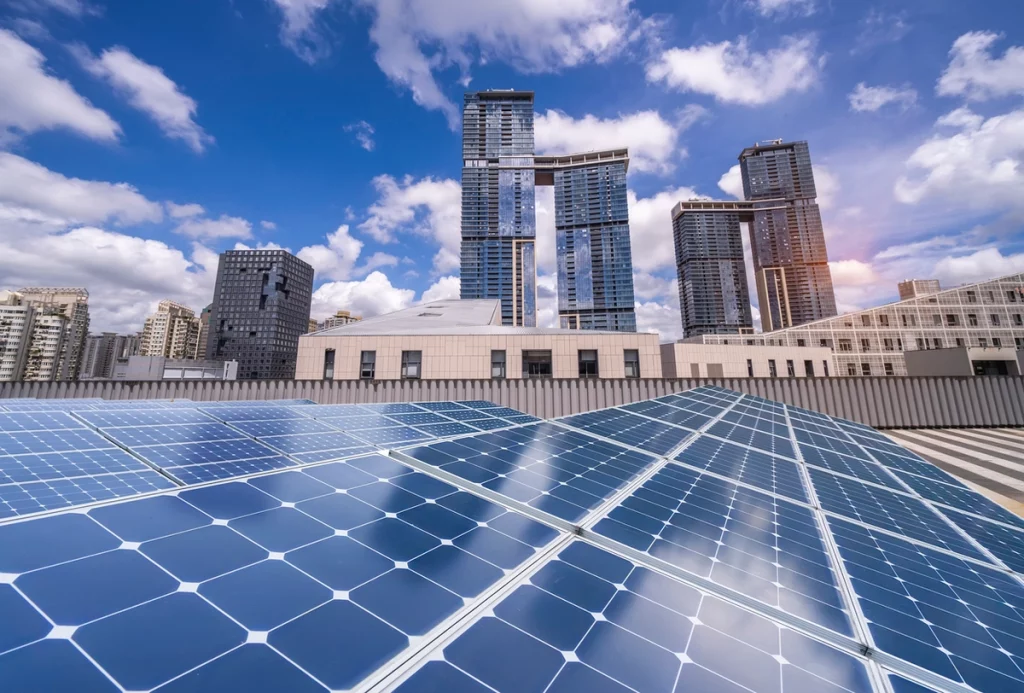On this page
How much does a 30kW solar system cost?
| 30kW | |
|---|---|
| Adelaide, SA | $29,920 |
| Brisbane, QLD | $26,770 |
| Canberra, ACT | $36,980 |
| Hobart, TAS | $25,550 |
| Melbourne, VIC | $26,940 |
| Sydney, NSW | $25,910 |
| Perth, WA | $30,040 |
| All | $28,870 |

Request a free solar business case and compare leading commercial installers
How much energy will a 30kW solar system produce?
- Geographical location of the system and the expected daily and annual solar irradiation and cloud cover levels there
- Orientation and tilt angle of the solar panel array
- Whether there is any shade cast on the panels
- Actual operating temperature of the panels
Is 30kW the right solar system size for your business?
- Roof space available: A 30kW system will require at least roughly 150-200m2 of area, but possibly more depending on the wattage of the panels and whether they require tilt frames.
- Your energy consumption habits: In many places in Australia, solar feed-in credits are not paid out for energy sent into the grid by solar systems over 10kW in capacity; this means that any solar energy that your system produces that you cannot use directly is of no financial benefit to you. Solar Choice’s engineers can independently assess your solar needs and develop a business case for you at no cost – click here.
- Your budget: If you have enough roof space to install the maximum recommended solar system size, then it comes down to whether you have the budget to invest in a system.
What is the typical ROI and payback period for a 30kW solar system?
Request a free solar business case and compare leading commercial installers
Since 2008 Solar Choice has consulted with over 3,000 businesses around Australia and helped develop over 800MW solar commercial and solar farm projects.
Latest posts by Jeff Sykes (see all)
- Solar Panel Costs: Solar Choice Price Index | April 2025 - 1 April, 2025
- Solar Panels For Homes – All You Need to Know About Solar Systems - 18 March, 2025
- Best NSW Solar Feed-In Tariffs - 17 March, 2025

I am not sure where they get the figure of 3 Peak Solar Hours per day on average from as the Commonwealth Government puts out stats on this that the BOM have provided and constantly re analyse – the Commonwealth figure for average solar sun hours per day in Sydney is 5.1. An examination of the stats provided by manufacturers also indicates there are only split hairs in the so called “premium” brands and the rest. In many cases there is no difference and it is only perception and marketing that provides this illusion to the general public. All this really does do is allow companies to optimise profit. As long as the warranty CAN be honoured and that the company manufacturing and supplying the warranty is sound is perhaps the main thing.
Hi Ian,
I think there is potentially a difference between the Peak Solar Hours mentioned and the average daily sunshine we normally use when talking about the expected generation of solar PV systems. With regard to Premium products and manufacturers versus less premium products, although it may not seem a lot on the surface an extra 2% will add up to a huge saving over the lifetime of the system and as energy prices continue to rise this 2% extra will bring greater rewards. Premium companies who take the time to give people and extra 2% will also be putting out panels that have passed durability tests that far exceed the minimum standards, some even offer a 25 warranty which includes minimum performance standards over the lifetime of the panel.
These Premium installers also have a genuine concern that when the poor quality cheap solar PV systems fail their will be a backlash against the industry, we would also prefer that everyone has a positive experience with solar. Solar Choice exists to ensure that residential and commercial customers are getting the best deal with their solar PV systems and working with installers and manufacturers who are more likely to go the distrance than those offering cheap solar deals.